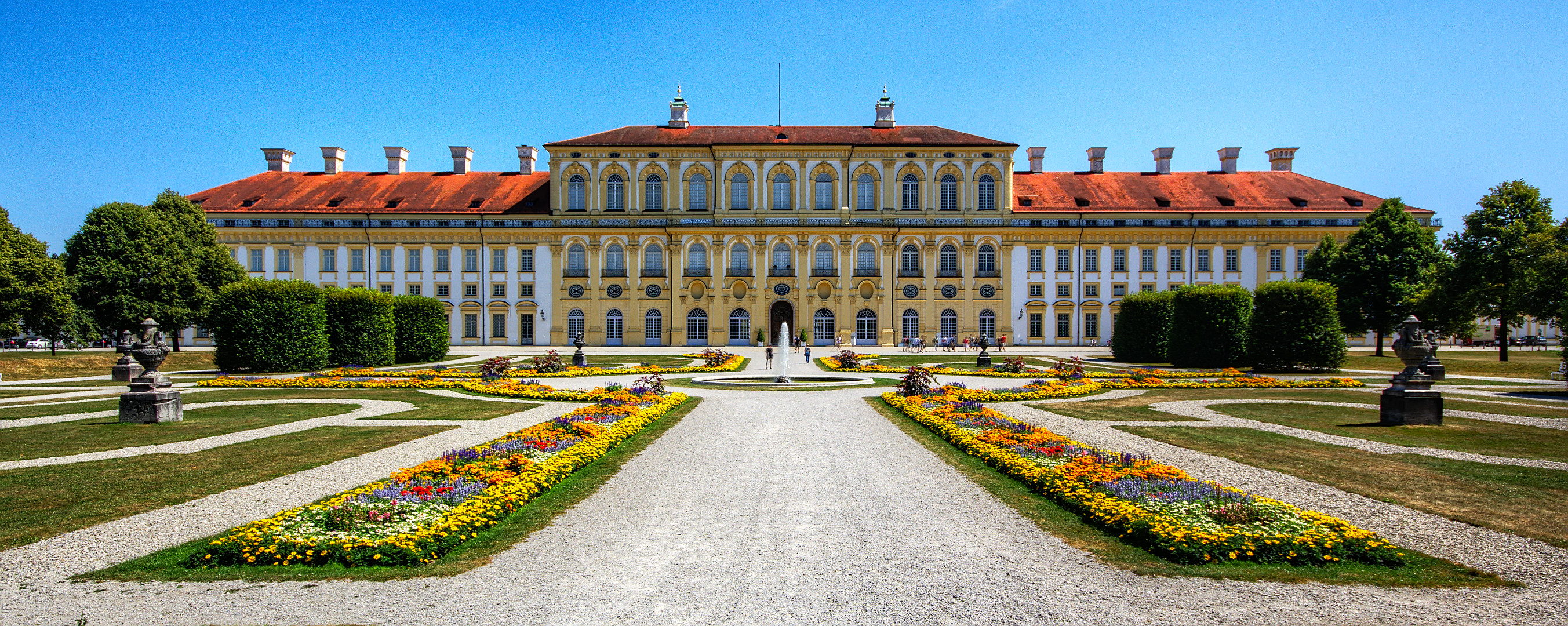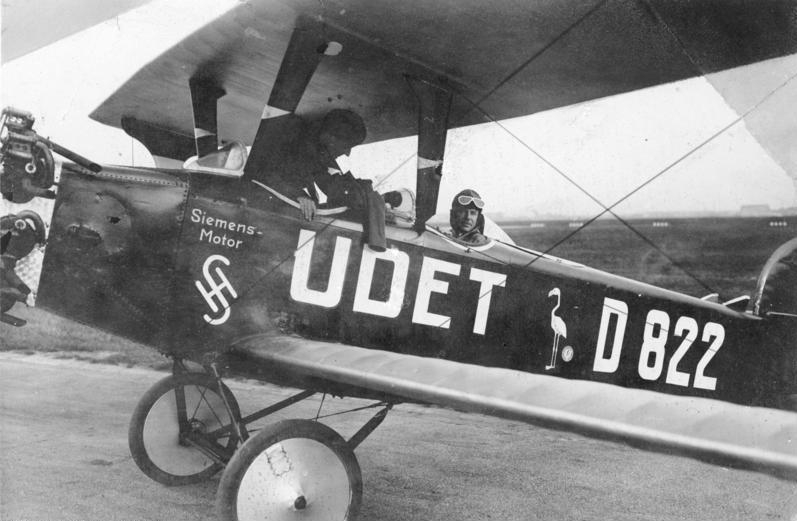|
Deutsches Museum Flugwerft Schleissheim
Flugwerft Schleissheim is an aviation museum located in the German town of Oberschleißheim near Munich, it forms part of the Deutsches Museum collection and complements the aviation exhibits on display at the main site. The museum was opened on 18 September 1992. Retrieved: 2 November 2010 Many aerospace exhibits are on display including fixed-wing aircraft, helicopters and s. The main display hangar is a restored glazed building, visitors are able to view exhibits undergoing restoration. Aircraft on display ''List from Deutsches Museum Flugwerft Schleissheim.''[...More Info...] [...Related Items...] OR: [Wikipedia] [Google] [Baidu] |
Oberschleißheim
Oberschleißheim () is a Municipalities of Germany, municipality in the Munich (district), district of Munich, in Bavaria, Germany. It is located 13 km north of Munich (centre). As of 2005 it had a population of 11,467. Oberschleißheim is best known for the Schleissheim Palace and the Flugwerft Schleissheim next to the airport housing the airplane department of the Deutsches Museum, German Museum. The airfield is also home to one of the five German Federal Police helicopter squadrons. Established in 1912, the airfield was the first in Bavaria. During World War II, a subcamp of Dachau concentration camp was located here. In the early 20th century, Schleißheim was home to author Waldemar Bonsels, who was inspired to write his "Biene Maja" by a gnarly tree in the woods nearby. History Schleißheim was first mentioned as “Sliusheim” in 785. The small church of St. Martin in Mallertshofen is a Romanesque church which still exists. In the Year 1315 the name of the villag ... [...More Info...] [...Related Items...] OR: [Wikipedia] [Google] [Baidu] |
Focke-Wulf Fw 44
The Focke-Wulf Fw 44 ''Stieglitz'' ("Goldfinch") is a 1930s German two-seat biplane. An early design by Kurt Tank, it was produced by the Focke-Wulf company as a pilot training and sports flying aircraft. It was also eventually built under license in several other countries. Design and development The Fw 44 was designed as a biplane with conventional layout and straight, untapered wings. Its two open cockpits were arranged in tandem, and both cockpits were equipped with flight controls and instruments. The Fw 44 had fixed tailwheel landing gear. It employed ailerons on both upper and lower wings. It did not use flaps. It was flown with a Siemens-Halske Sh 14 radial engine. The first prototype flew in 1932. After many tests and modifications to increase the plane's durability and aerodynamics, the final Fw 44 proved to have excellent airworthiness. A second version of the Fw 44 was the Fw 44B, which had an Argus As 8 four-cylinder inverted inline air-cooled engine of 90 ... [...More Info...] [...Related Items...] OR: [Wikipedia] [Google] [Baidu] |
Karl Vollmöller
Karl Gustav Vollmöller (or Vollmoeller; 7 May 1878 – 18 October 1948) was a German philologist, archaeologist, poet, playwright, screenwriter, and aircraft designer. He is most famous for the elaborate religious spectacle-pantomime '' The Miracle'' and the screenplay for the celebrated 1930 film ''The Blue Angel'' (''Der blaue Engel''), which made a star of Marlene Dietrich. Life Vollmöller was born in Stuttgart, Württemberg, the son of merchant Robert Vollmöller (1849–1911), who founded his own textile company (''Vollmoeller AG'') in 1881 and, together with his wife Emilie, née Behr (1852–1894), became known as a pioneer of social market economy. His uncle Karl Vollmöller (1848–1922) was a notable Romance philologist and Anglicist; his sister Mathilde Vollmöller (1876–1943) married the painter Hans Purrmann in 1912. He began writing after the early death of his mother in 1894, and went on to study classical philology, art and painting at the universities of Be ... [...More Info...] [...Related Items...] OR: [Wikipedia] [Google] [Baidu] |
Udet U 12
The Udet U 12 Flamingo was an aerobatic sports plane and trainer aircraft developed in Germany in the mid-1920s. Design and development The U 12 was a conventional, single-bay biplane of wooden construction with the wings braced by large I-struts. The pilot and instructor or passenger sat in tandem, open cockpits. The U 12 proved extremely popular and sold well, due in no small part to Ernst Udet's spectacular aerobatics routines while flying the aircraft. One particularly acclaimed part of his act included swooping down towards the airfield and picking up a handkerchief with the tip of one wing. The popularity of this aircraft was insufficient to rescue Udet Flugzeugbau from its dire financial position, but when the company's assets were taken over by the state of Bavaria to form BFW, production of the U 12 soon resumed in earnest. BFW-built U 12s were exported to Austria, Hungary and Latvia, and later built under licence in these countries as well. Variants Germany * U 12a ... [...More Info...] [...Related Items...] OR: [Wikipedia] [Google] [Baidu] |
Ranger M (ultralight Aircraft)
A Ranger is typically someone in a military/paramilitary or law enforcement role specializing in patrolling a given territory, called “ranging”. The term most often refers to: * Park ranger or forest ranger, a person charged with protecting and preserving protected parklands and forests. ** National Park Service ranger, an employee of the National Park Service ** U.S. Forest Service ranger, an employee of the United States Forest Service ** Ranger of Windsor Great Park, a ceremonial office of the United Kingdom * Ranger (character class), a class that appears in many different role-playing games Ranger or Rangers may also refer to: Arts and entertainment Publications * Ranger's Apprentice, a series of novels by John Flanagan * ''Ranger Rick'', a children's nature magazine published by the United States National Wildlife Federation * ''Ranger'' (magazine), a former British comic magazine Fictional entities * Rangers (comics), a Marvel Comics superhero team * Ranger (Middle-e ... [...More Info...] [...Related Items...] OR: [Wikipedia] [Google] [Baidu] |
Raab Krähe
The Raab Krähe ( en, crow) is a West German high-wing, single-seat, pusher configuration motor glider that was designed by Fritz Raab for amateur construction around 1958.Rogers, Bennett: ''1974 Sailplane Directory, Soaring Magazine'', page 87. Soaring Society of America, August 1974. USPS 499-920 Design and development Raab designed the Krähe specifically for homebuilders. The Krähe is constructed from wood, with the fuselage made from a wooden structure covered in doped aircraft fabric. The span wings are built with a wooden structure and covered in plywood and fabric. The wings feature spoilers and a custom Raab-designed airfoil. The tailplane is braced with four cables to the wing trailing edge. The landing gear is a fixed monowheel. The motor installation is unconventional for a motorglider in that the engine is mounted in the rear of the cabin area, with the propeller in between the top and bottom tail boom tubes. Motors used are usually of an output of about . ... [...More Info...] [...Related Items...] OR: [Wikipedia] [Google] [Baidu] |
Müller DDMH 22
Müller may refer to: * ''Die schöne Müllerin'' (1823) (sometimes referred to as ''Müllerlieder''; ''Müllerin'' is a female miller) is a song cycle with words by Wilhelm Müller and music by Franz Schubert * Doctor Müller, fictional character in ''The Adventures of Tintin'' by Hergé * Geiger–Müller tube, the sensing element of a Geiger counter instrument * GMD Müller, Swiss aerial lift manufacturing company * Müller (company), a German multinational dairy company * Müller (footballer, born 1966), nickname of ''Luís Antônio Corrêa da Costa'', Brazilian footballer * Muller glia, a macroglial cell in the retina * Müller Ltd. & Co. KG, a German pharmacy chain * Müller (lunar crater), impact crater on the lunar surface * Müller (Martian crater), impact crater on the Martian surface * Müller (store), a German retail store chain * Müller (surname), a common German surname * Müller-Thurgau, German wine grape * Müller Brothers, 19th-century string quartet * Müller Mi ... [...More Info...] [...Related Items...] OR: [Wikipedia] [Google] [Baidu] |
MBB 223 Flamingo
The MBB 223 Flamingo was a light aircraft developed in West Germany in the 1960s in response to a competition for a standard trainer for the country's aeroclubs. Designed by SIAT, it was a conventional low-wing monoplane with fixed tricycle undercarriage. The cockpit was enclosed by a large bubble canopy. SIAT had not undertaken much production of the type before the firm was acquired by MBB in 1970. Eventually, the new owners transferred production to CASA in Spain. A fully acrobatic, single-seat version, and a four-seat utility version were also developed. Operational history During the 2020 Turkish intervention in Idlib, Turkish airstrikes on Kweres Airfield destroyed at least 3 stored Syrian Air Force MBB 223 Flamingos. Variants ;Model 223A-1 Flamingo Trainer A1 :Two or four-seat trainer aircraft, powered by a 149-kW (200-hp) Avco Lycoming IO-360 piston engine. ;Model 223K-1 Flamingo Trainer K1 :Single-seat aerobatic aircraft, powered by a 149-kW (200-hp) Avco Lycoming ... [...More Info...] [...Related Items...] OR: [Wikipedia] [Google] [Baidu] |
LFU 205
The LFU 205 is a single-engined, four-seat, low-wing monoplane, that was built in the late 1960s entirely from glass reinforced plastic. Design and development The Leichflugtechnik-Union (LFU) was a consortium formed by the Bölkow, Pützer and Rhein-Flugzeugbau companies specifically to produce an aircraft built entirely of glass reinforced plastic (grp). The result, the LFU 205 was one of the first all-grp light aircraft. The LFU 205 is a single-engined, low-winged monoplane of conventional appearance apart from slight, 7° forward sweep on the moderately tapered wing. This carries Fowler flaps along the whole trailing edge inboard of the Frise ailerons. The tail surfaces are also straight tapered, with the vertical surfaces slightly swept. The tailplane is a single piece, all moving surface. There are two pairs of side by side seats under a large curved, rearward sliding, canopy. Fuselage and flying surfaces are monocoque structures using a grp sandwich with a smooth o ... [...More Info...] [...Related Items...] OR: [Wikipedia] [Google] [Baidu] |
Lancair IV
The Lancair IV and IV-P are a family of four-seat, low-wing, retractable-gear, composite monoplanes powered by a 550 cubic inch Continental TSIO-550 twin-turbocharged piston engine.Vandermeullen, Richard: ''2011 Kit Aircraft Buyer's Guide'', Kitplanes, Volume 28, Number 12, December 2011, page 59. Belvoir Publications. ISSN 0891-1851Kitplanes Staff: ''2008 Kit Aircraft Directory'', page 59, Kitplanes Magazine December 2007 Volume 24, Number 12, Belvior Publications, Aviation Publishing Group LLC.Bayerl, Robby; Martin Berkemeier; et al: ''World Directory of Leisure Aviation 2011-12'', page 106. WDLA UK, Lancaster UK, 2011. ISSN 1368-485X Production of the aircraft kit was ended in 2012. Development The Lancair IV and IV-P were designed by Lancair around the Continental TSIO-550 — a twin turbocharged engine that is capable of developing at sea level, and capable of operating at altitudes as high as 29,000 feet. By the fall of 2011, 110 Lancair IVs and 250 IV-Ps had been com ... [...More Info...] [...Related Items...] OR: [Wikipedia] [Google] [Baidu] |
Klemm Kl 25
Klemm L 25, later Klemm Kl 25 was a successful German light leisure, sports and training monoplane aircraft, developed in 1928. More than 600 aircraft were built, and manufacturing licenses were sold to the United Kingdom and the United States. Design and construction With a low cantilever wing, fixed landing gear, and two open cockpits, the aircraft was developed by Hanns Klemm, who used his previous design, the Daimler L20, as a starting point. It first flew on a Daimler F7502 engine. About 30 different versions of the Kl 25 were made, and these were equipped with engines ranging from . The fuselage was covered with plywood. Depending on the model, the aircraft's weight was , and it had a wingspan. Takeoff was achieved at only and the maximum speed was between . In relation to similar aircraft of the time, assembly was very easy, and this made it a very popular aircraft. According to the sales brochures, only 25% of the engine's power was needed to keep the aircraft flyi ... [...More Info...] [...Related Items...] OR: [Wikipedia] [Google] [Baidu] |






.jpg)
